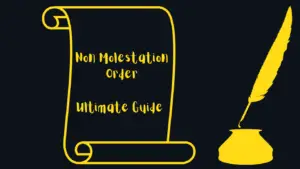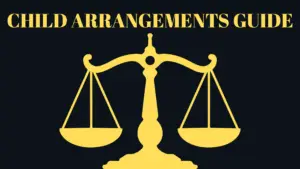Last Updated: Saturday, 6 September 2025
You have navigated the intense stress of a Section 7 report, and just when you thought the investigation was over, the words “addendum report” are mentioned in court. The moment you hear this, it can feel like your case has been thrown into uncertainty all over again. Is this a good or a bad thing? What does this new report mean, and will it be a chance to correct the record or simply reinforce the original findings?
Understanding what a Section 7 addendum report is – and its very specific purpose – is crucial. This is not a full-blown reinvestigation; it is a focused tool used by the court to get up-to-date information. As a former CAFCASS officer, I can tell you that an addendum can be a powerful opportunity if you approach it strategically. This guide will provide a clear explanation of what an addendum is, the common reasons it’s ordered, and how you can use this opportunity to ensure the judge has the most accurate picture before making a final decision about your children.
Key Takeaways
- An addendum is a focused update, not a new report. It is a supplemental document ordered by the court to look into a specific issue, such as a change in circumstances or an unanswered question.
- It has a very limited and narrow scope. Unlike the original report, the CAFCASS officer will only investigate the precise question(s) the judge has asked them to.
- Requesting an addendum can be a powerful strategy. If new, significant evidence has emerged or the original report is out of date, asking for an addendum is your chance to get this crucial information formally presented to the court.
- The process is significantly quicker. Because of their narrow focus, addendum reports are typically completed in 4-8 weeks, much faster than a full Section 7 report.
Facing an addendum report and not sure what it means for your case? WhatsApp us today for clear, practical guidance before your next hearing.
Quick Navigation:
Why Would a Court Order an Addendum Report?
A judge orders an addendum report to ensure the information they are relying on is as accurate and current as possible before making a life-changing decision for a child. It signals that the judge believes more specific information is needed to make a safe and fair decision.
The most common reasons are:
- A Significant Change in Circumstances: A parent may have moved to a new home, changed jobs, or completed a course recommended by the court since the original report was written.
- To Clarify Unanswered Questions: The judge may feel the original report did not adequately address a specific issue, leaving a gap in their understanding.
- To Address a Flaw or Omission: It may be shown that the original report missed a key piece of evidence or failed to speak to a relevant professional (like a teacher or doctor) as directed.
- To Update an Outdated Report: If a case has faced significant delays, a judge will often order a brief addendum to refresh an old report before making a final order.
You cannot just write to CAFCASS and ask for an addendum; you must ask the judge at a hearing. This is most effectively done in your Position Statement.
Unsure if you should ask the judge for an addendum? WhatsApp us to discuss whether it’s the right move.
Snippet from a Position Statement Requesting an Addendum
Here is a practical example of how to frame that request respectfully and strategically.
9. The Section 7 Report: I have read the Section 7 report of Ms. Smith dated 15th July 2025. I note that the report does not address the impact of the mother’s proposed relocation on my son’s educational needs, specifically the support he receives for his dyslexia at his current school. This was a key issue raised in my C100 application.
10. Way Forward: I would respectfully ask the Court to consider ordering a short addendum report to address this single issue, so that the Court may be fully informed of the educational implications before making a final decision.
A Deep Dive: The Purpose and Scope of an Addendum Report
Understanding what an addendum report is designed to do – and what it is not – is key to managing your expectations and preparing effectively. It is a tool for precision, not a complete re-run of your case.
Official Definition: A Section 7 addendum report is a supplemental written update, ordered by the court, intended to be read alongside an existing Section 7 report. Its purpose is to provide the court with further, specific information on a narrowly defined issue without requiring a full re-investigation of the family’s circumstances.
Breakdown of Components:
To really understand how an addendum works, it helps to break down the key situations where the court may order one and what they mean for you as a father.
Addressing a Significant Change in Circumstances
What This Means For You: If something major and relevant has changed (e.g., you’ve secured a stable family home, or the other parent’s situation has changed in a way that creates a risk), this is a valid reason to ask the court to order an addendum. You must provide proof of this change to the judge.
Answering a Specific Unanswered Question
What This Means For You: This is often a strategic opportunity. If you believe the original report’s recommendation was based on an incomplete picture, you can highlight this to the judge and suggest an addendum is needed to investigate that specific point further. This is a key part of challenging an unfair report.
Correcting a Serious Omission
What This Means For You: If the CAFCASS officer failed to follow the court’s direction (e.g., they were asked to speak to your child’s school but did not), you can show the court that a key line of enquiry was missed and that an addendum is required to rectify it.
A Real Life Scenario: A Section 7 report recommended limited contact for a father, partly because his housing was described by his ex-partner as “unstable.” Six months later, before the final hearing, the father secured a long-term tenancy on a three-bedroom house near the child’s school. At the next hearing, he presented the signed tenancy agreement to the judge. The judge, recognising this was a significant and relevant change, ordered a short addendum report for CAFCASS to visit the new home and report back only on its suitability.
At a Glance: Addendum Report vs. A New Section 7 Report
Fathers often confuse an addendum with a completely new report – but they are very different tools. Here’s a side-by-side comparison so you can see the contrasts clearly.
| Feature | Addendum Report ✅ | New Section 7 Report ❌ |
|---|---|---|
| Scope | ✅ Narrow & Focused: Looks at a specific new issue or unanswered question. | ❌ Broad & Comprehensive: A full re-investigation of all Welfare Checklist points. |
| Timescale | ✅ Quicker: Often completed in 4–8 weeks. | ❌ Slower: Typically takes the full 12–16 weeks. |
| When It’s Used | ✅ For updates, to correct omissions, or to address new events. | ❌ Only in exceptional circumstances where the original report is seriously flawed. |
| Likelihood | ✅ More Likely: Courts prefer addendums as they are faster and more efficient. | ❌ Very Unlikely: Courts are extremely reluctant to order a full second report. |
| Purpose | ✅ To supplement and be read alongside the original report. | ❌ To completely replace the original report. |
Need help understanding which applies to your case? Message us for tailored guidance.
Common Mistakes to Avoid
Even though an addendum is narrower and quicker than a full report, many fathers trip up by treating it the wrong way. Here are the pitfalls you must steer clear of.
- Asking for an addendum for the wrong reasons. Simply disliking the recommendation is not enough. You must have a specific new fact, a significant change, or a clear omission to present to the judge as a valid reason.
- Missing the opportunity to ask. The hearing after the original report is filed is your key chance to raise issues and request an addendum. If you don’t raise it then, the opportunity may be lost.
- Not providing evidence to the court. If you are arguing there has been a significant change of circumstances, you must provide proof (e.g., a tenancy agreement, a certificate of course completion) to the judge when you make your request. A judge is far more likely to agree if you can prove your point.
Don’t risk making these mistakes – WhatsApp us for expert advice before your next step.
FAQs About Addendum Reports
Fathers often have the same urgent questions when a Section 7 addendum report is mentioned – here are the answers you need most.
What is an addendum to a Section 7 report?
It is a supplemental, follow-up report ordered by a judge to update an existing Section 7 report or to investigate a specific issue that was not fully covered in the original. It is designed to be read alongside the first report.
How do I get an addendum to a CAFCASS report?
You must ask the judge directly at a court hearing. A strategic approach involves explaining to the court, usually in your Position Statement, exactly why an addendum is necessary due to a significant change in circumstances or a clear omission in the first report.
How long does an addendum report take?
They are typically much quicker than the original report. Depending on the complexity of the issue the judge asks CAFCASS to look at, an addendum can take between 4 and 8 weeks to be completed and filed.
What should be in an addendum report?
The report should only contain information about the specific, narrow issue(s) that the judge has directed the CAFCASS officer to investigate. It will not be a full re-investigation of all points on the Welfare Checklist.
Can I challenge an addendum report?
Yes. The process is the same as for the main report. If you disagree with the addendum’s contents, you should file a Position Statement with the court explaining your position before the next hearing.
What is the difference between an addendum and a new report?
An addendum updates or adds to the original report on a specific point. A new Section 7 report is a complete re-investigation from scratch, which is very rarely ordered by the court.
Will a judge order an addendum report?
A judge will order one if they believe it is necessary to have the most accurate and up-to-date information before making a decision that is in the child’s best interests. They are far more likely to order a faster, cheaper addendum than a full new report.
Can a CAFCASS officer refuse to do an addendum?
No. If a judge makes a court order for CAFCASS to prepare an addendum report, the assigned officer is legally required to comply with that judicial direction.
Do I need a solicitor to ask for an addendum report?
No, you can ask for one yourself as a litigant-in-person. However, it is often beneficial to have support from a McKenzie Friend to help you frame your request correctly and strategically in your Position Statement.
What happens after an addendum report is filed?
The report is filed with the court and sent to the parents. The court will then list another hearing (often a Final Hearing) to consider the findings of both the original report and the addendum before making a final Child Arrangements Order.
Insider Insight from Lach
When a judge orders an addendum report, it’s a positive sign. It means they are taking the time to get the decision right and are not simply rubber-stamping the first report. They have identified a gap in their knowledge and are seeking to fill it. For a well-prepared father, this is not a moment of uncertainty; it is an opportunity. It’s your chance to provide the specific, factual information that could shift the court’s perspective and lead to a better outcome for your child.
Meet Lach, Your Guide at Dads Consultancy
Understanding the purpose of an addendum report is key to navigating the court process. With our fixed-fee support, we can help you analyse the situation and decide if asking for an addendum is the right strategic move for your case.
Next Steps
At Dads Consultancy, we provide the specialised, expert support to help you navigate these complex stages. As a former CAFCASS officer, our founder understands the process from the inside and knows how and when to argue for an addendum report. We can help you with:
- Navigating Section 7 Reports: We provide expert guidance on analysing your S7 report and advising on whether requesting an addendum is a viable strategy.
- Drafting Powerful Position Statements: We guide you in writing a compelling statement that makes a clear and reasoned request to the court for an addendum report.
- Handling the CAFCASS Call: We prepare you for any interactions with CAFCASS, ensuring you present yourself in the best possible light.
- Responding to Allegations: If reports are based on false allegations, we help you structure factual, evidence-based responses.
👉 Learn more about how we can support you or book a free consultation today
🧠 Insider Insight: Lach, our founder, is a qualified social worker who used to write Section 7 reports for CAFCASS — the very reports that influence court outcomes. Now he helps dads respond to them. Learn more about Lach’s background.




